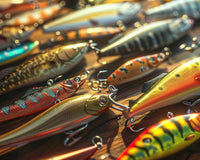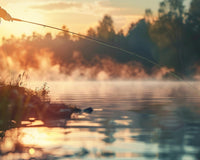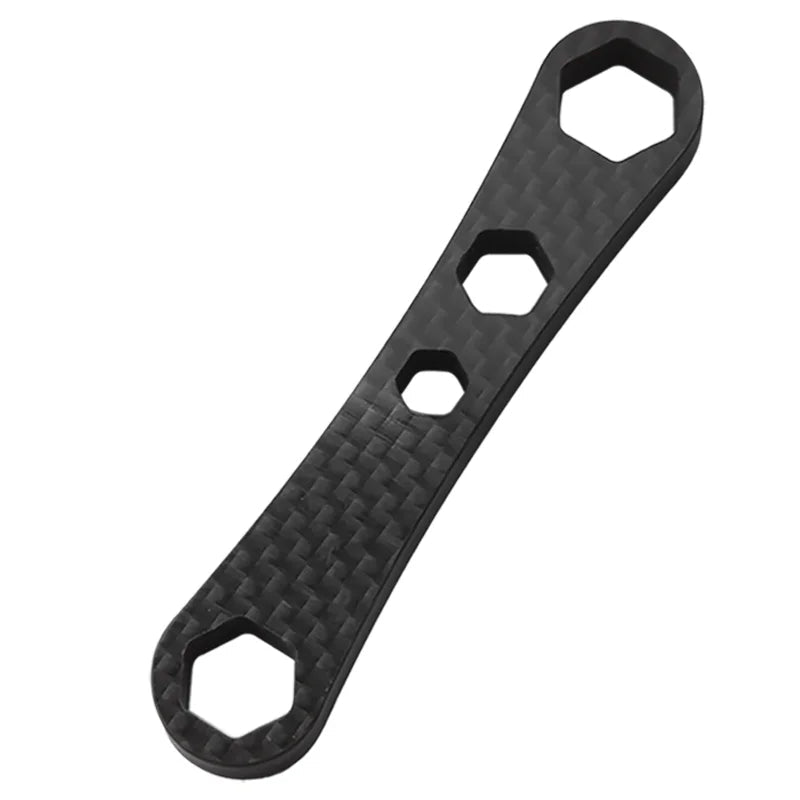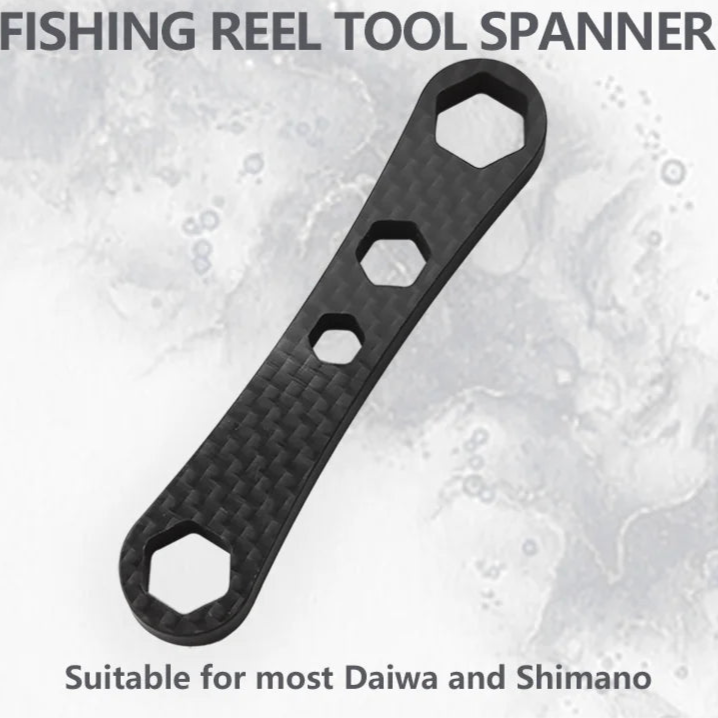Fishing is an art that evolves with time. The tools of the trade, particularly fishing lures, have seen significant advancements over the years.
In this article, we delve into the latest fishing lure trends and innovations. We explore how these developments are shaping the angling world, enhancing the fishing experience for both novice and seasoned anglers.
Crankbaits, minnow lures, and spinnerbaits are just a few examples of lures that have undergone remarkable transformations. These changes are not just about aesthetics, but also about improving functionality and effectiveness.
We also look at the rise of smart soft plastics and swimbaits. These lures incorporate advanced technologies and materials, offering a more realistic and enticing presentation to fish.
Dry flies and nymph flies, staples in the fly fishing world, have also seen innovative changes. New patterns and materials are making these lures more effective than ever.
Lastly, we touch on the emergence of floating baits. These lures stay on the surface, making them ideal for targeting specific species.
Join us as we navigate the exciting world of fishing lure trends and innovations. Discover how these developments can enhance your angling experience and increase your catch rate.
The Evolution of Fishing Lures
Fishing lures have come a long way from simple, handcrafted designs. Originally, they were made from materials such as wood and feathers. These basic lures were effective but lacked the sophistication of modern counterparts.
Today, technology plays a crucial role in lure design. 3D printing allows for precise customisations, while advanced materials provide improved durability. As anglers demand more efficient tools, lure manufacturers continue to innovate with new shapes and vibrant colours.
The modern fishing lure aims to imitate the natural prey of fish more closely than ever before. Features like electronic components and scent-infused plastics have increased their attractiveness. This evolution reflects the growing trend of prioritising both function and sustainability in lure creation. As a result, angling has become more interactive and rewarding. Anglers now have a greater chance of success, regardless of their skill level.
Crankbaits: Versatility in the Water
Crankbaits have become a favourite among anglers due to their adaptability. These lures can be used in diverse water conditions, making them highly versatile. Whether in clear lakes or murky rivers, crankbaits perform impressively.
The design of crankbaits allows them to cover different depths quickly. This feature helps anglers reach fish hiding at various layers in the water. Their distinct wobbling action mimics the movement of distressed prey, attracting predatory fish.
Another advantage of crankbaits is the wide array of colours and sizes available. This variety enables anglers to match the local baitfish better, increasing the likelihood of a successful catch. As more innovations arise, crankbaits continue to hold a significant position in the tackle boxes of experienced and novice anglers alike, offering unmatched versatility and effectiveness.
The Realism of Minnow Lures
Minnow lures have gained acclaim for their lifelike imitation of natural baitfish. With advancements in design and materials, these lures now closely replicate the appearance and movement of real minnows. This realism plays a crucial role in attracting more fish.
Modern minnow lures often feature intricate details such as scales and 3D eyes. These elements, combined with realistic colouring, make them appear authentic in any water condition. As a result, predatory fish are more likely to strike, mistaking them for a real meal.
The effectiveness of minnow lures isn't confined to one species or environment. Anglers can use them successfully in both freshwater and saltwater fishing. The versatility, combined with realistic features, positions minnow lures as a top choice for anglers aiming for success in capturing diverse fish species.
Spinnerbaits and Spinner Spoons: A Shiny Comeback
Spinnerbaits and spinner spoons have made a stunning return to the angling scene. These lures are famous for their reflective blades that catch light and attract fish. New materials and designs have enhanced their visibility and effectiveness.
Modern innovations focus on blade shape and finish, optimising performance across various water conditions. The rotating blades mimic small fish, creating vibrations and flashes that lure predatory fish. This makes them ideal for murky waters where visual cues are vital.
These lures cater to a wide range of fish species, thanks to their adaptability. Anglers appreciate their ability to provoke aggressive strikes, even from cautious fish. With improved designs, spinnerbaits and spinner spoons are making waves, enticing more anglers to add them to their tackle boxes for their versatility and unique attraction power.
Jigging Lures: Shapes and Materials that Make a Difference
Jigging lures have evolved significantly in their shapes and materials. These changes have enhanced their effectiveness in attracting fish. The unique motions created by these lures underwater are key to their success.
Innovative shapes allow jigging lures to mimic wounded prey, making them irresistible to predatory fish. Anglers benefit from new materials that offer increased durability and sharper hooks. These advancements ensure the lures maintain their action and integrity over time.
Jigging lures are prized for their ability to reach different depths quickly. The combination of versatile designs and robust construction makes them ideal for various fishing environments. From deep-sea to shallow freshwater, these lures cater to every scenario, helping anglers secure more catches with finesse and precision.
Topwater Lures: Creating a Surface Spectacle
Topwater lures are known for their ability to create a surface spectacle. These lures generate commotion that attracts fish from various depths. Their ability to mimic surface prey is a major draw for predatory species.
The designs of topwater lures are diverse, offering different styles like poppers, buzzbaits, and walkers. Each type creates its own unique action, producing splashes and vibrations that tempt fish to strike. This surface action makes fishing with topwater lures both exciting and visually stimulating.
Apart from aesthetics, these lures are strategically effective, especially in low-light conditions. At dawn or dusk, when predators hunt near the surface, topwater lures shine brightest. Their enticing movements and noise make them standout choices for anglers looking to amplify their catches in dynamic fishing scenarios.
Smart Soft Plastics: The Scent of Success
Smart soft plastics have transformed the fishing experience with their unique attributes. These lures often feature integrated scents and flavours, making them more enticing to fish. As fish bite, the scent encourages them to hold on longer, increasing the chances of a successful catch.
Incorporating biodegradable materials is another innovation in smart soft plastics. These eco-friendly options ensure minimal environmental impact while maintaining effectiveness. The pliability of these materials also allows for naturalistic lure movements that mimic actual prey.
Customisation plays a key role in the success of soft plastics. Anglers can modify shapes and sizes to suit various fishing conditions. This versatility, combined with scent technology, provides a powerful edge in attracting fish. Smart soft plastics continue to grow in popularity among anglers who value adaptability and eco-conscious choices.
Swimbaits: The Art of Imitation
Swimbaits have revolutionised fishing with their realistic design and action. These lures effectively mimic the appearance and movement of natural prey. Jointed bodies and soft materials allow swimbaits to glide through water with lifelike motion, fooling even wary fish.
The use of swimbaits is favoured for targeting larger predatory species. These lures are crafted to endure aggressive strikes, offering both durability and flexibility. As their popularity rises, manufacturers constantly improve designs, enhancing their swimming action and lifelike details.
Anglers enjoy experimenting with swimbaits in various conditions to test their effectiveness. They are often utilised in clear water where their realistic qualities shine. As the art of imitation progresses, swimbaits continue to provide a thrilling and productive fishing experience, bridging the gap between man-made lures and natural bait.
Fly Fishing Innovations: Dry Flies and Nymph Flies
Fly fishing stands out with its unique approach and tools. Dry flies and nymph flies are key elements in this art form. They are designed to float and mimic insects that fish naturally prey upon.
These flies are not mere imitations; they are crafted to perfect realism and function. Material advancements have led to flies that are both durable and incredibly lifelike. Anglers seek new patterns and materials to match local hatches, maximising their success.
Today's innovations push the envelope, with designs that improve flotation and visibility. This evolution helps anglers adapt to varying fishing conditions. As fly fishing continues to grow, so does the ingenuity and effectiveness of dry and nymph flies, ensuring their place in the modern angler's tackle box.
Floating Baits: Staying on Top of the Game
Floating baits have captivated anglers with their ability to stay on the water's surface. This feature makes them ideal for targeting surface-feeding fish. These baits often create disturbances that attract predatory fish, sparking interest and inducing strikes.
The advancements in floating baits focus on buoyancy and movement. They are crafted to not only float but also mimic live prey. The combination of colour and surface action can be pivotal in luring cautious fish into taking a bite.
Today's floating baits also incorporate eco-friendly materials. This reflects the growing emphasis on sustainability in fishing. As the appeal of surface fishing expands, floating baits are continuously refined, providing anglers with exciting opportunities to explore new techniques and catch more fish.
Technological Advancements in Lure Design
Innovations in technology are reshaping the fishing lure industry. Electronic components like LED lights are now being integrated into lures. These features increase the lure's visibility, attracting fish in low-light conditions and murky waters.
3D printing has revolutionised custom lure making, offering unparalleled precision. Anglers can create personalised designs tailored to specific needs. This technology enables experimentation with shapes and patterns that were previously impossible.
Modern materials also play a significant role in lure advancements. Durable composites and hybrid materials enhance both performance and longevity. These materials enable the creation of lures that are both effective and environmentally friendly. As technology continues to evolve, anglers can expect even more innovative products designed to improve their fishing experiences.
The Role of Angler Communities in Lure Trends
Angler communities play a crucial role in shaping fishing lure trends. Through forums and social media, anglers share valuable insights and experiences. This exchange of information helps identify which lures are most effective under various conditions.
Online platforms also enable anglers to share innovative techniques and lure modifications. These shared experiences often lead to new trends in lure usage and development. For example, a creative rigging technique could become widely popular due to community endorsement.
Fishing expos and trade shows are another avenue where angler communities influence lure trends. Such events foster interactions between anglers and manufacturers. Feedback from these engagements can directly impact future lure designs and improvements. The power of community engagement is evident as it continues to drive innovation in the fishing industry.
Environmental Considerations and Lure Selection
Environmental concerns are becoming pivotal in fishing lure design. Increasingly, manufacturers are opting for eco-friendly materials. This shift helps to minimise the ecological footprint of fishing activities.
Biodegradable plastics and lead-free components are becoming more common. These innovations aim to protect aquatic ecosystems. Anglers also play a part by choosing sustainable lures that reflect their commitment to conservation.
Choosing eco-friendly lures doesn't mean sacrificing effectiveness. Modern designs offer both sustainability and performance. As awareness grows, anglers are choosing lures that not only catch fish but also protect the environment they love.
Final Thought: The Future of Fishing Lures
The future of fishing lures looks vibrant and promising. Continuous innovation will define new trends and techniques. These advancements hold the potential to transform angling experiences.
As technology evolves, so will lure designs and materials. This evolution aims to enhance both performance and sustainability. Anglers, armed with this new knowledge and equipment, will be well-prepared for future challenges. Staying informed about the latest fishing lure trends ensures the sport remains exciting and dynamic. The journey ahead is sure to be an adventurous one, full of discovery and success.
At HOOK LINE SINKER, we offer a hand-picked range of high-quality fishing LURES, CRANKBAITS & JIGS, FLY FISHING FLIES, MINNOW LURES, SOFT PLASTICS & SWIMBAITS, SPINNERBAITS & SPOONS, TOPWATER & FLOATING LURES and FISHING LIGHTS designed to trigger strikes, match local baitfish, and boost your success on the water.
Happy fishing! 🎣










